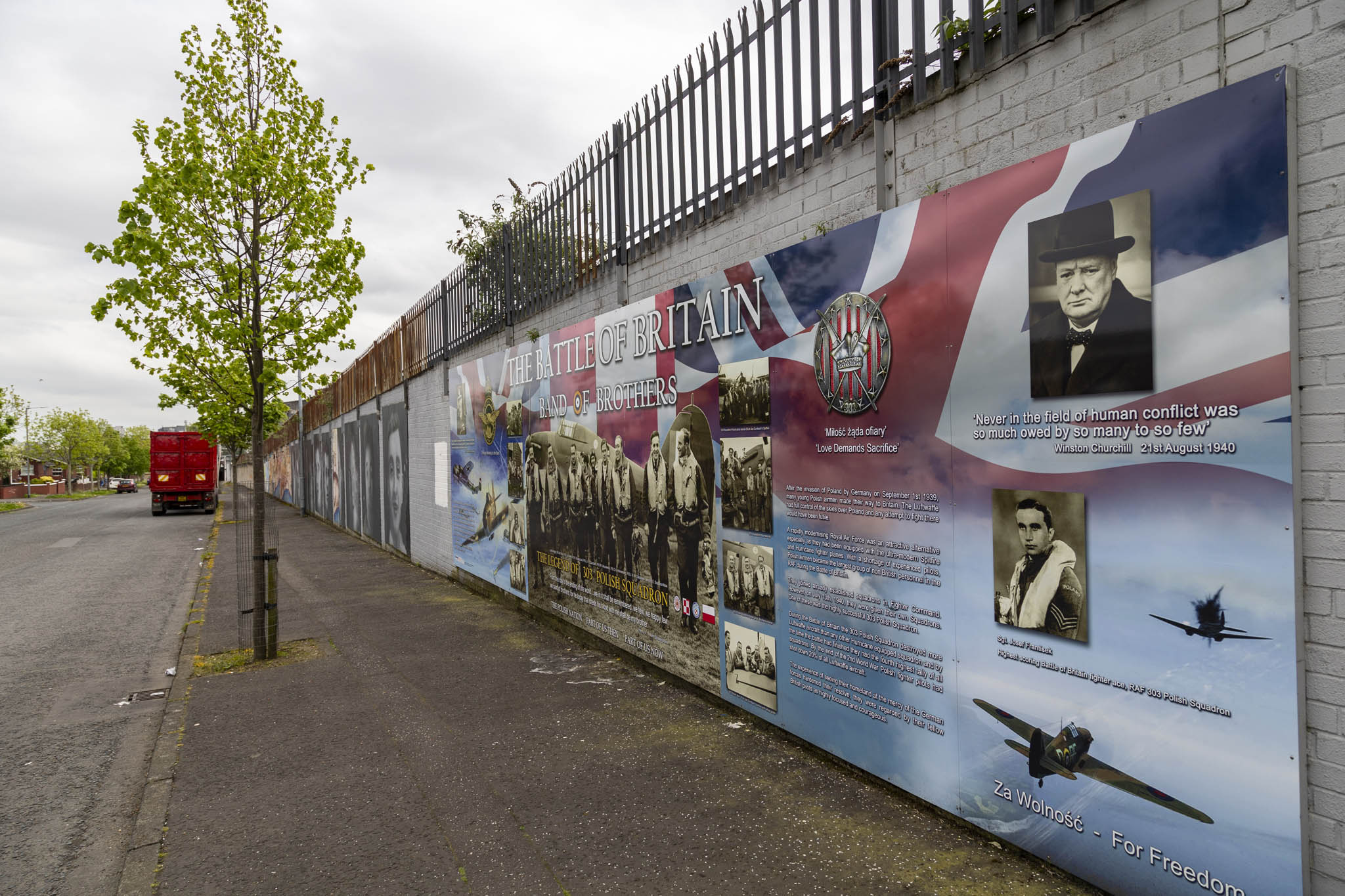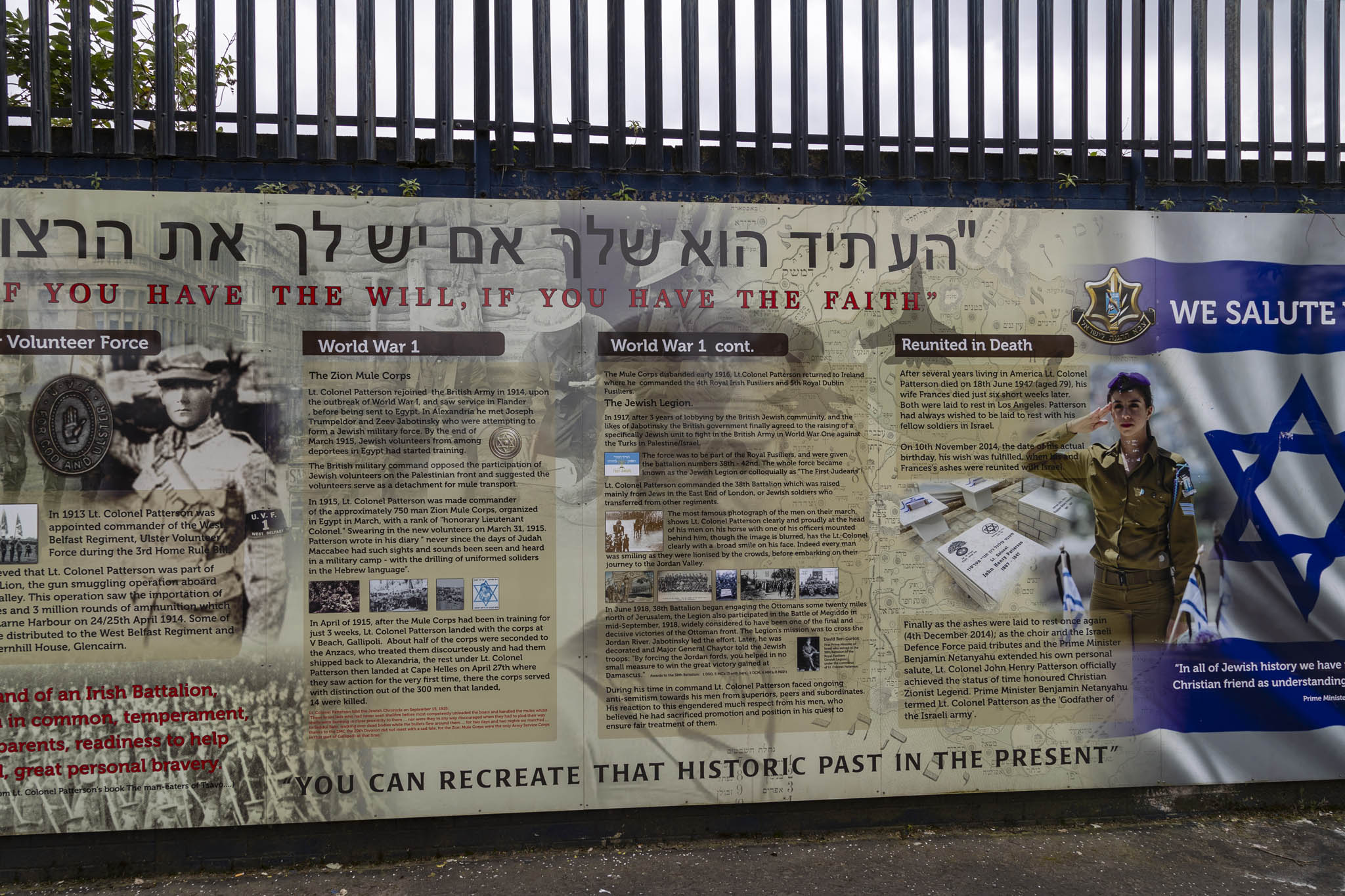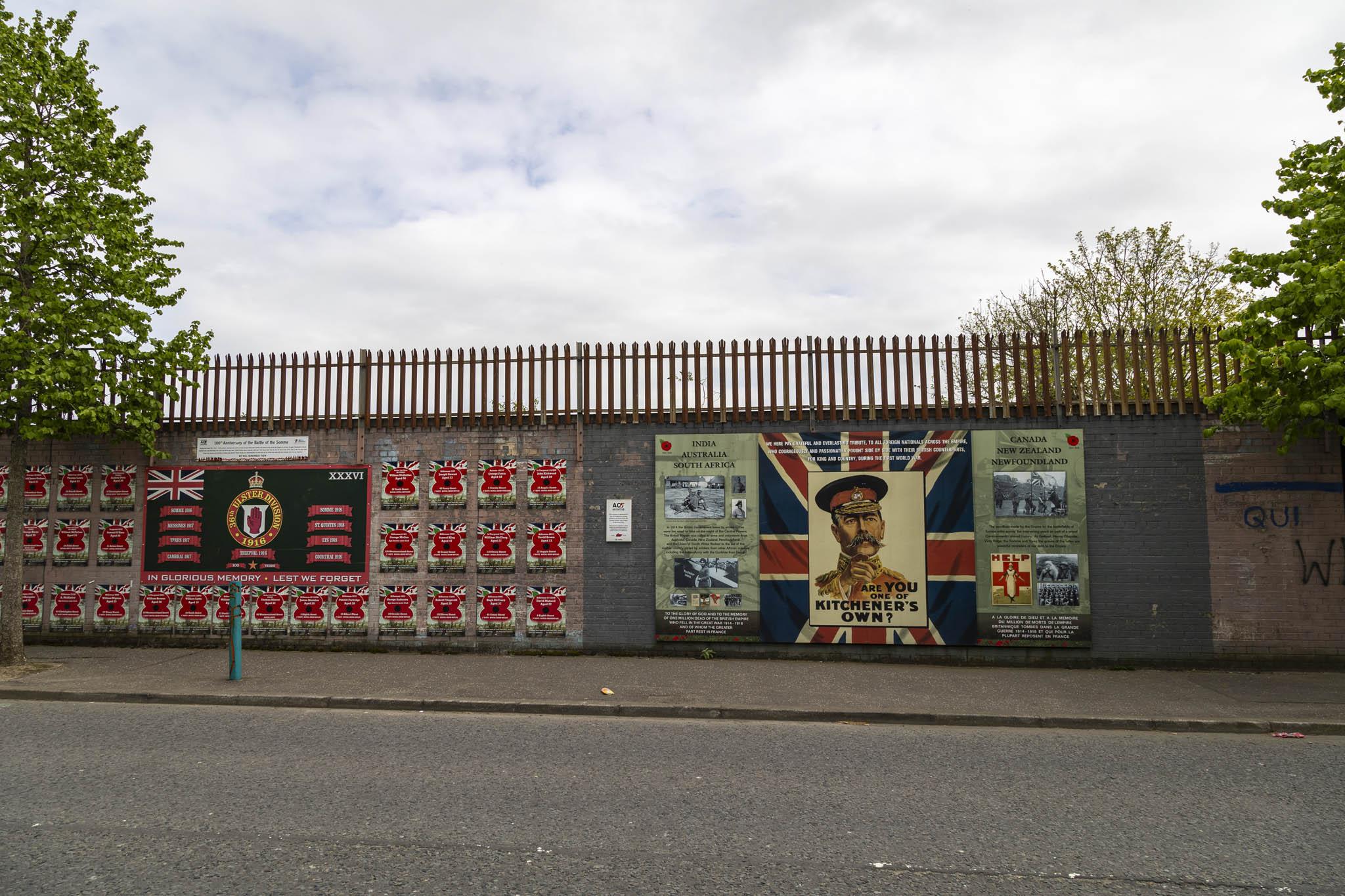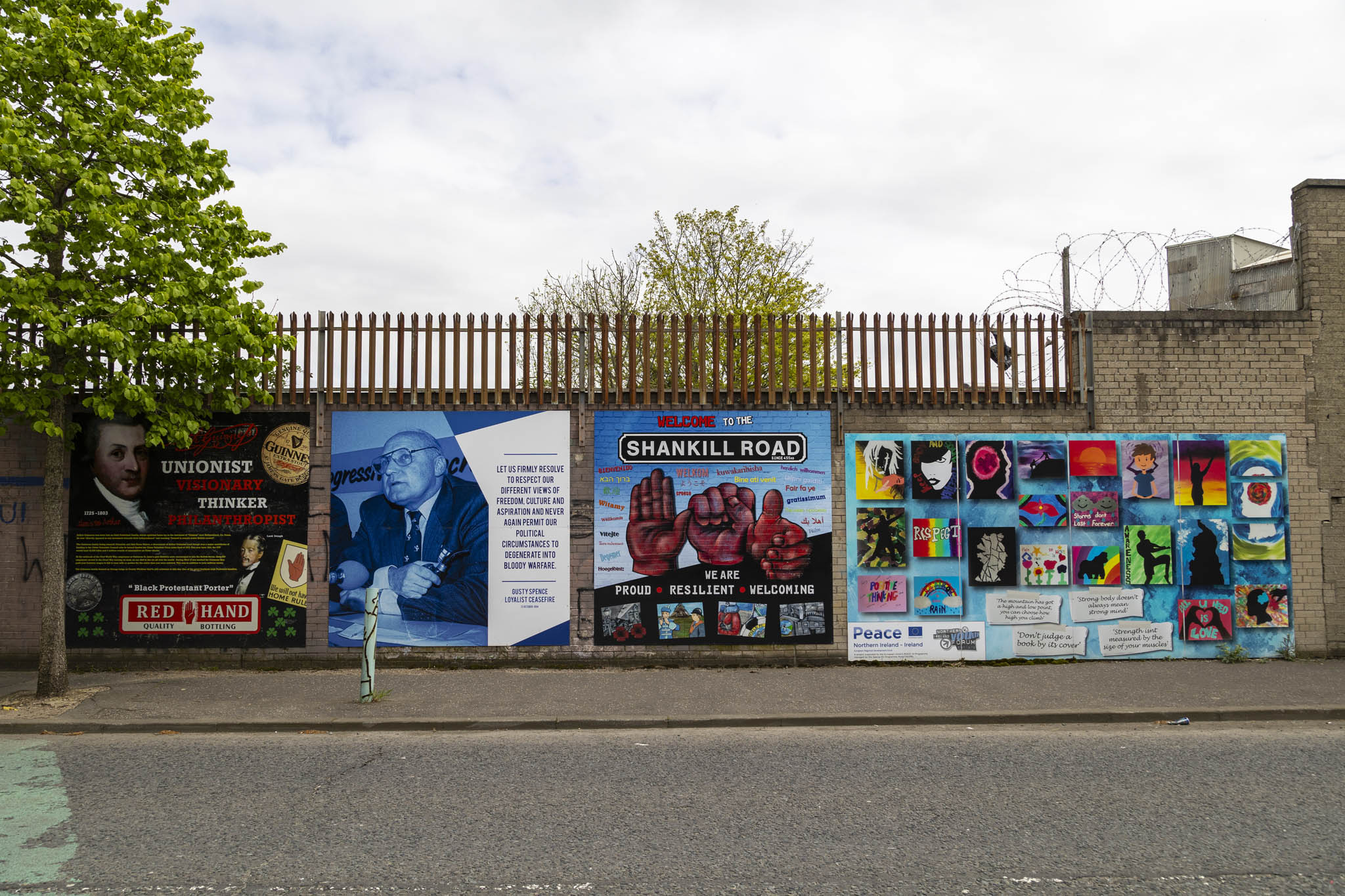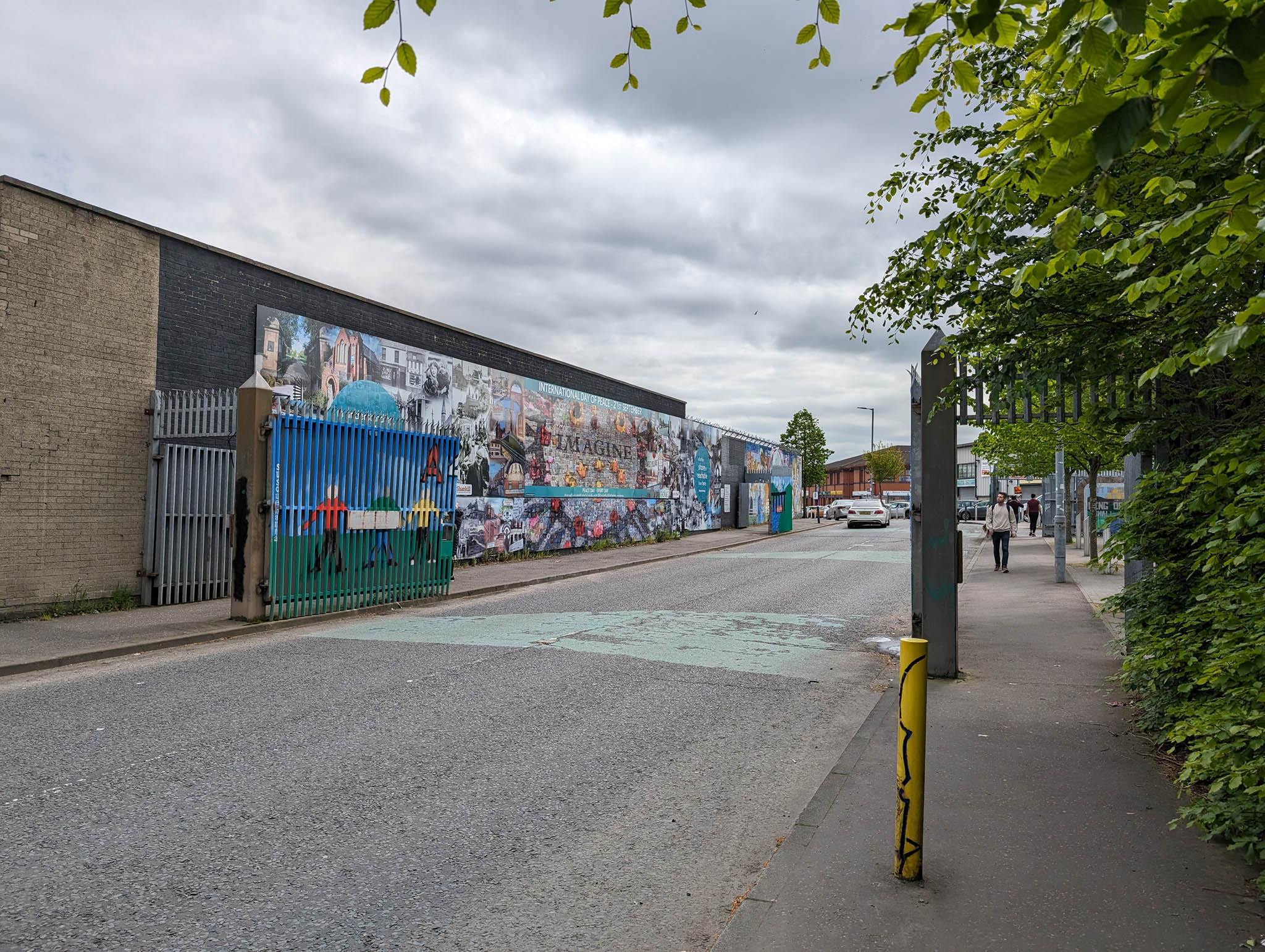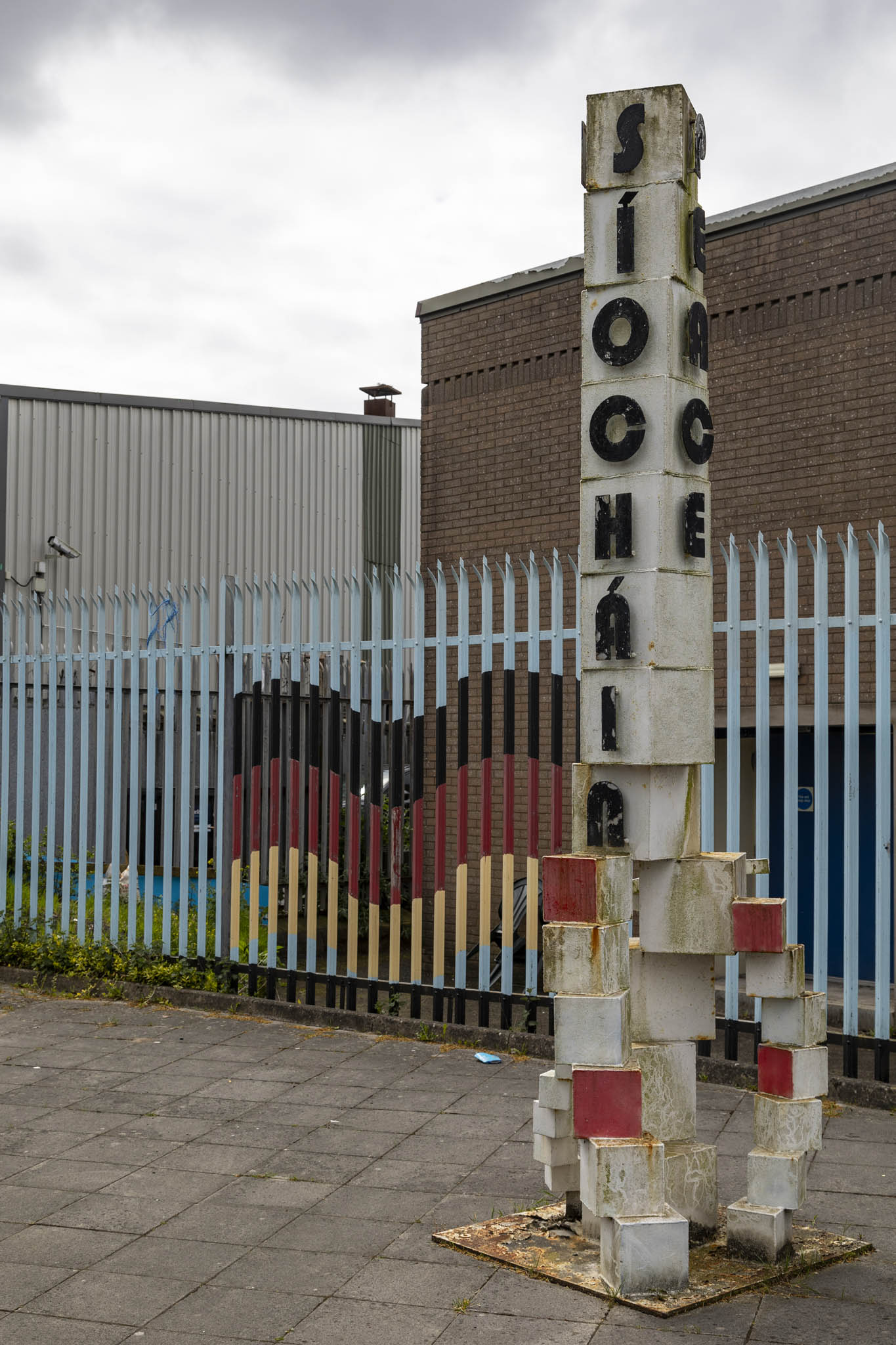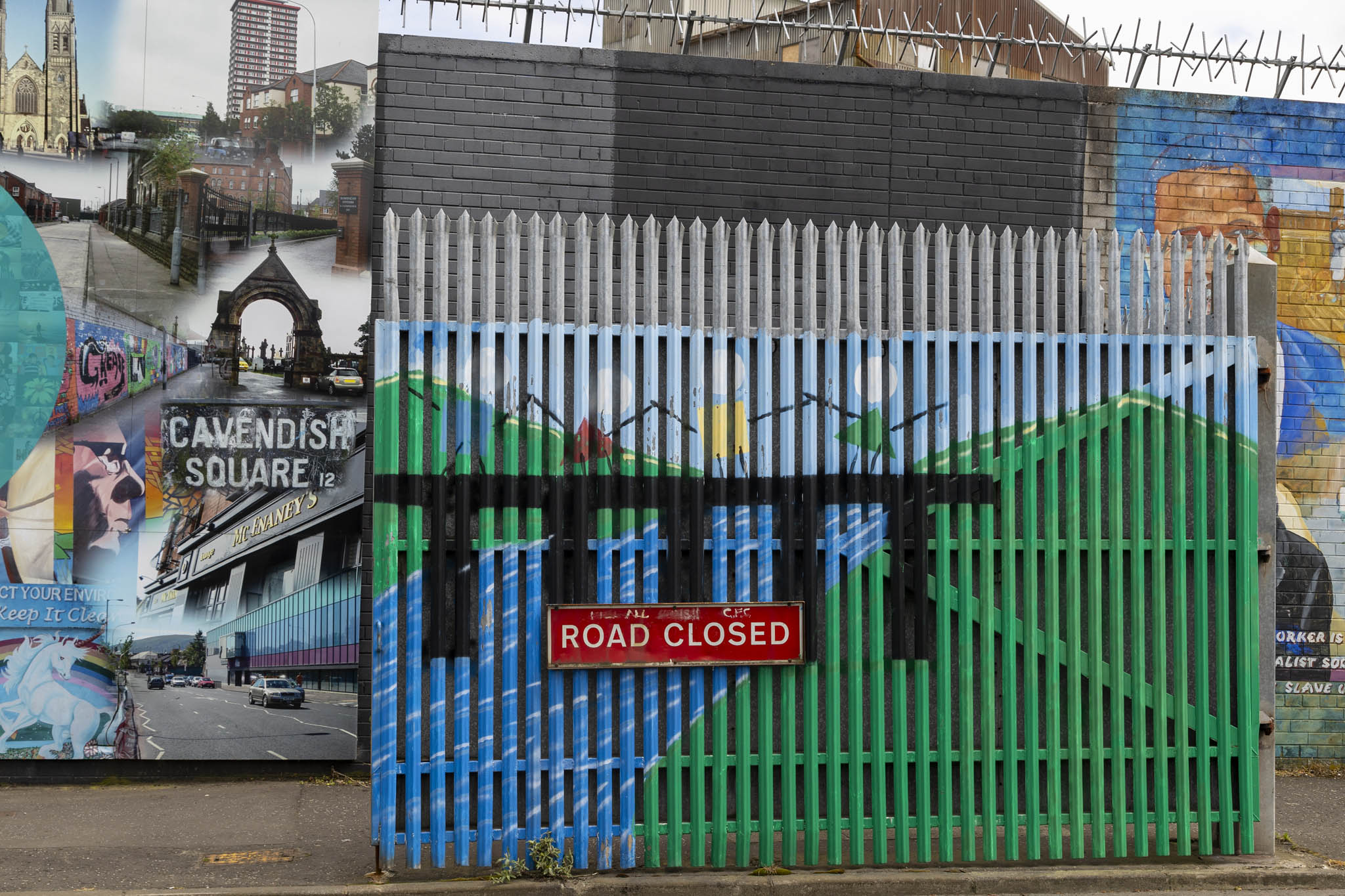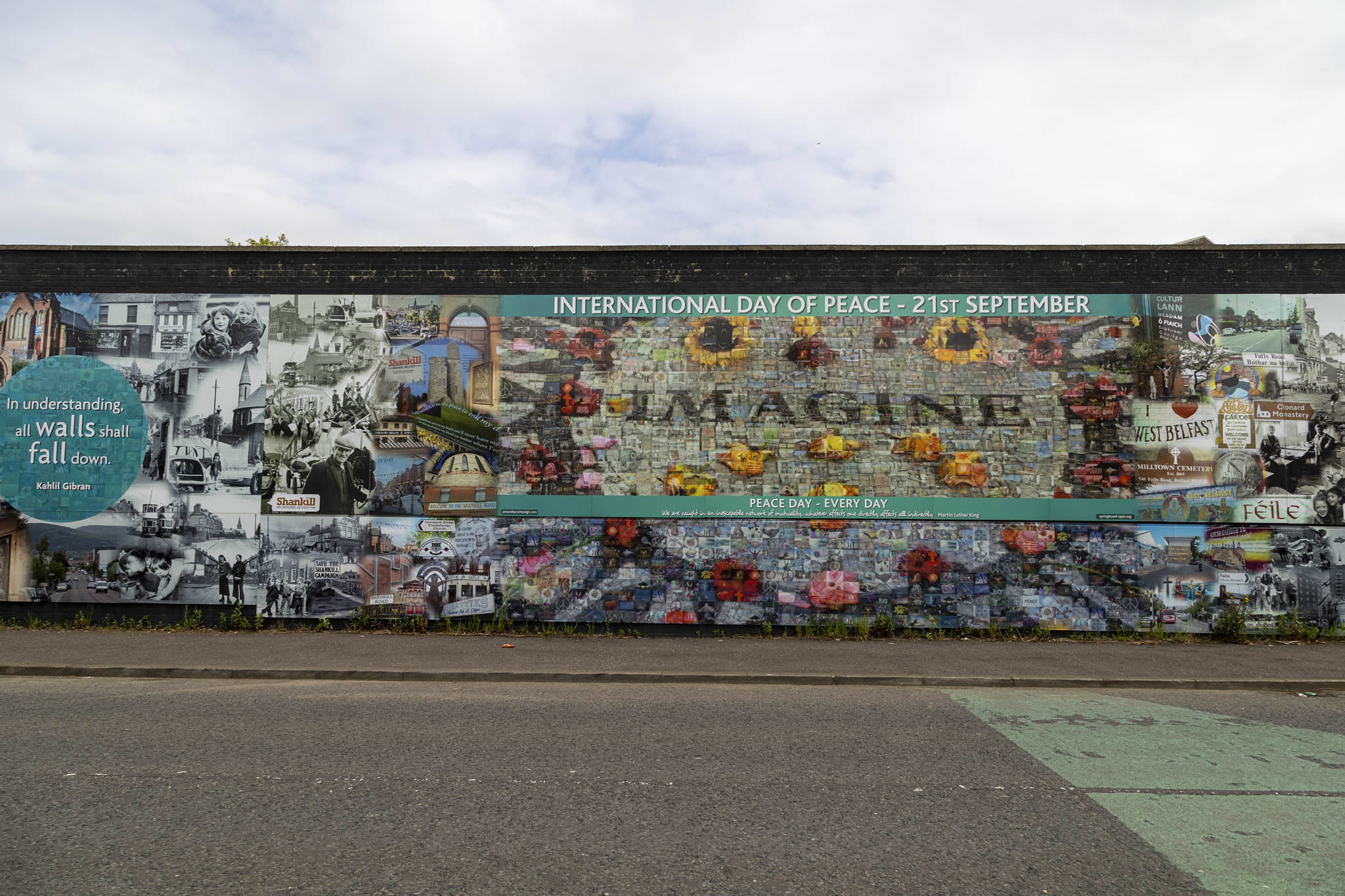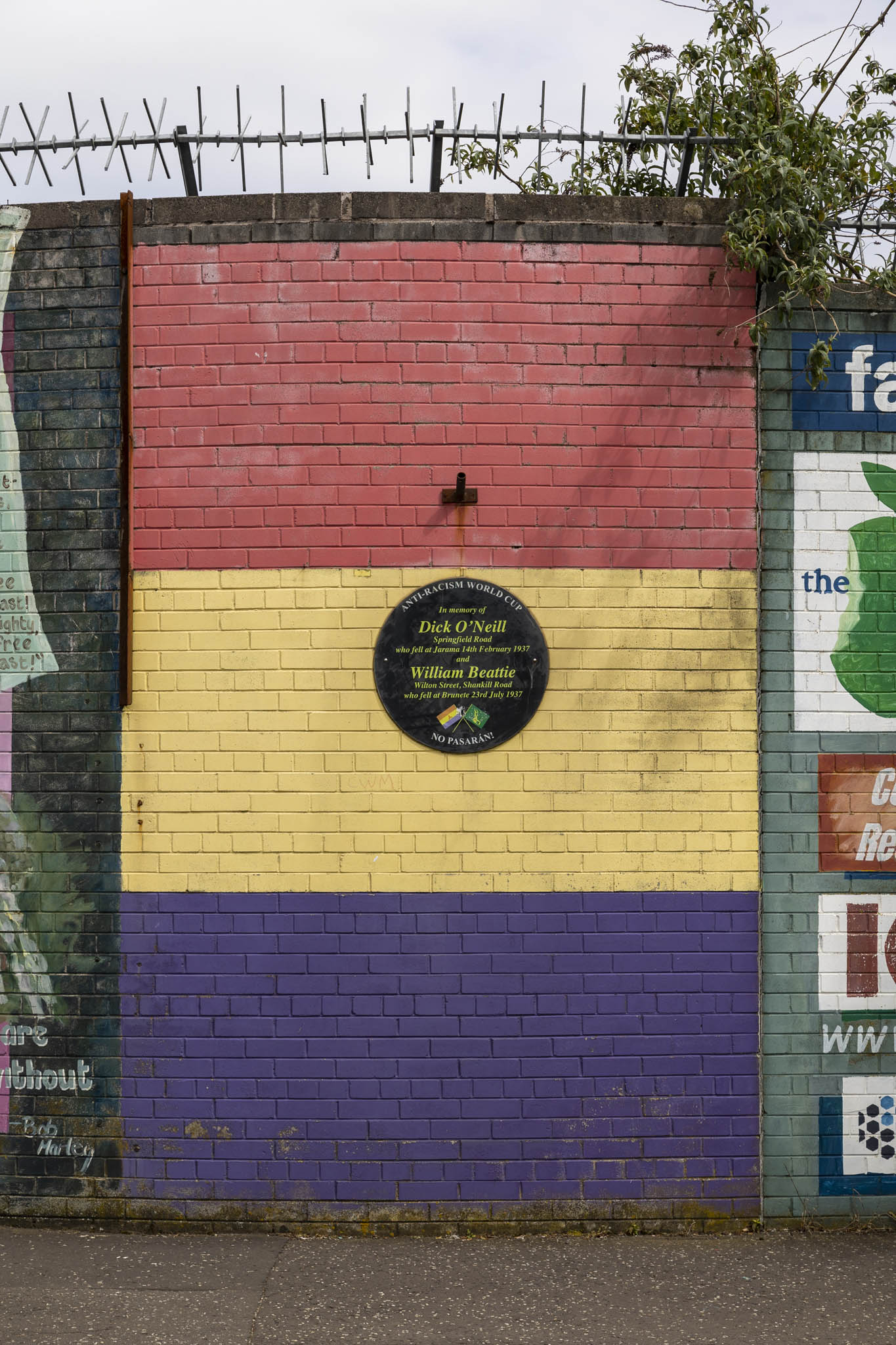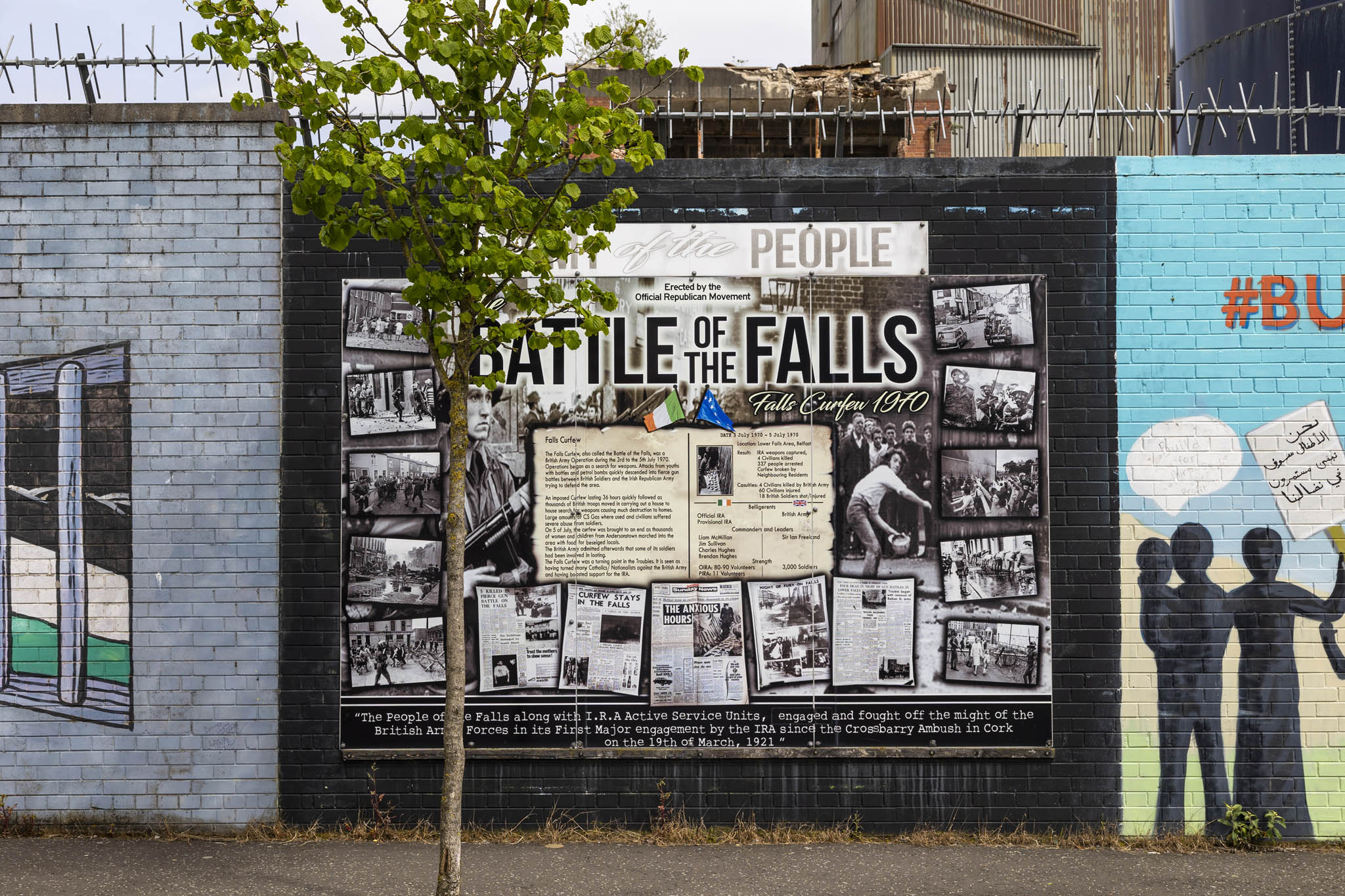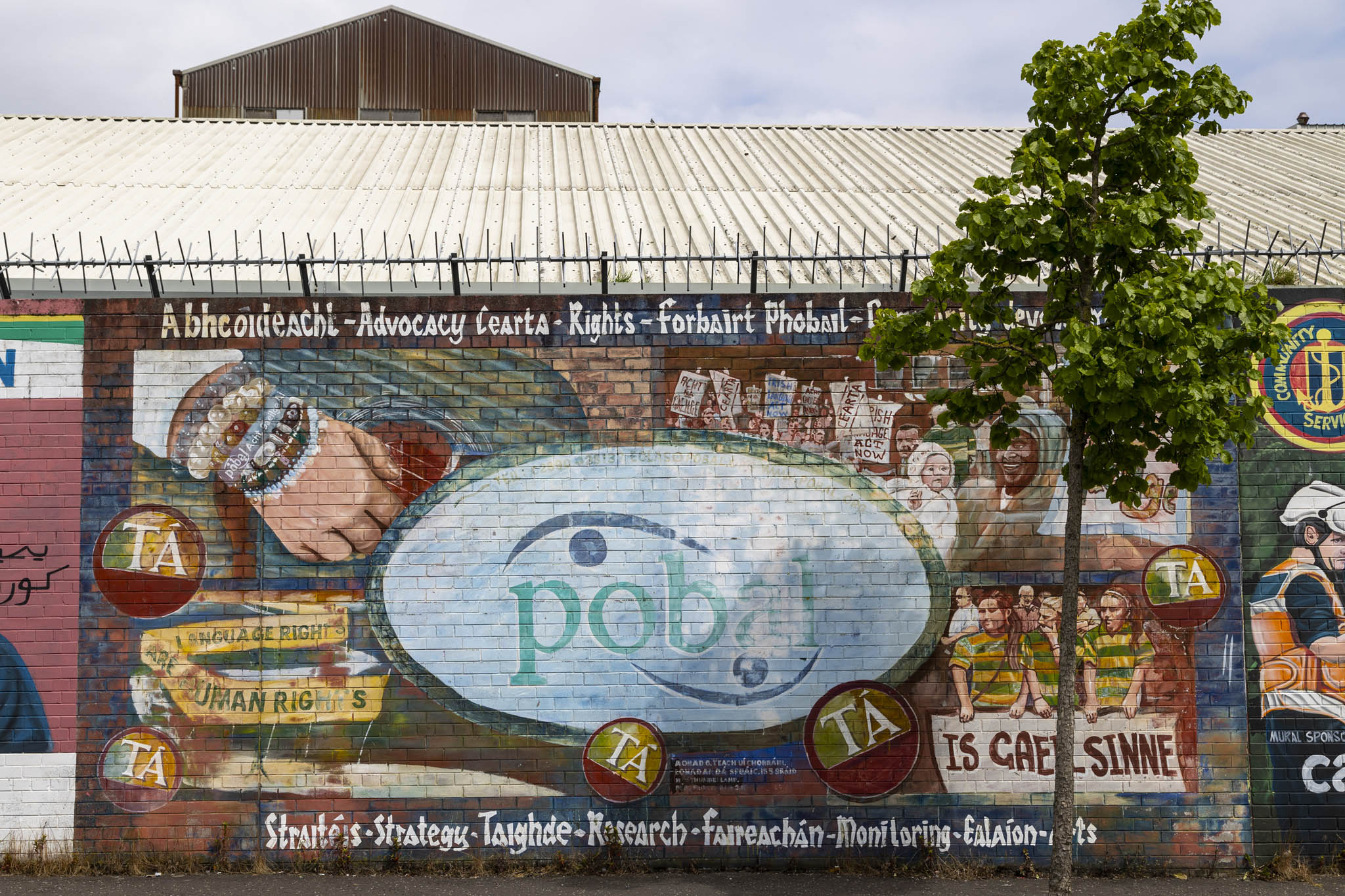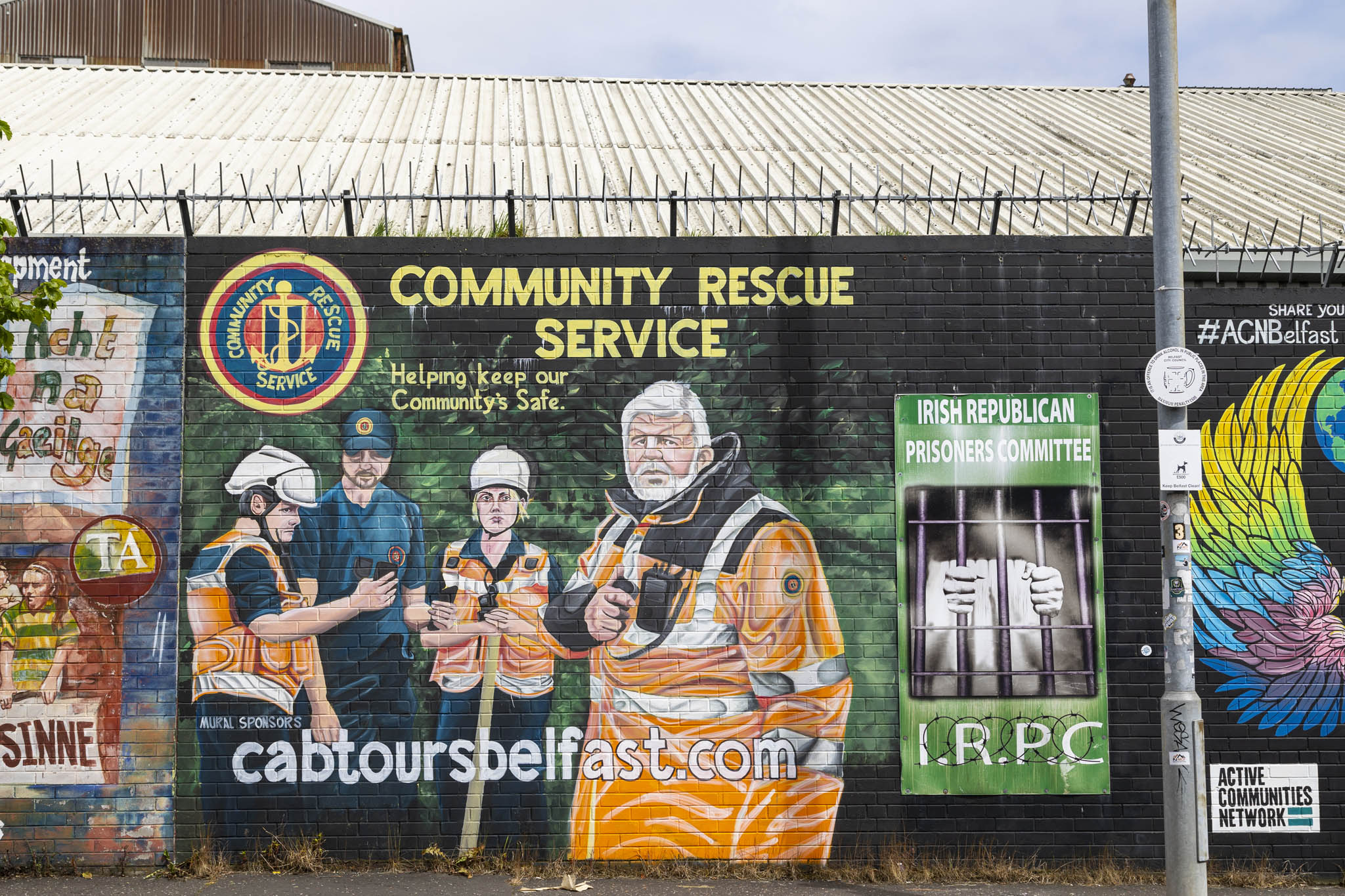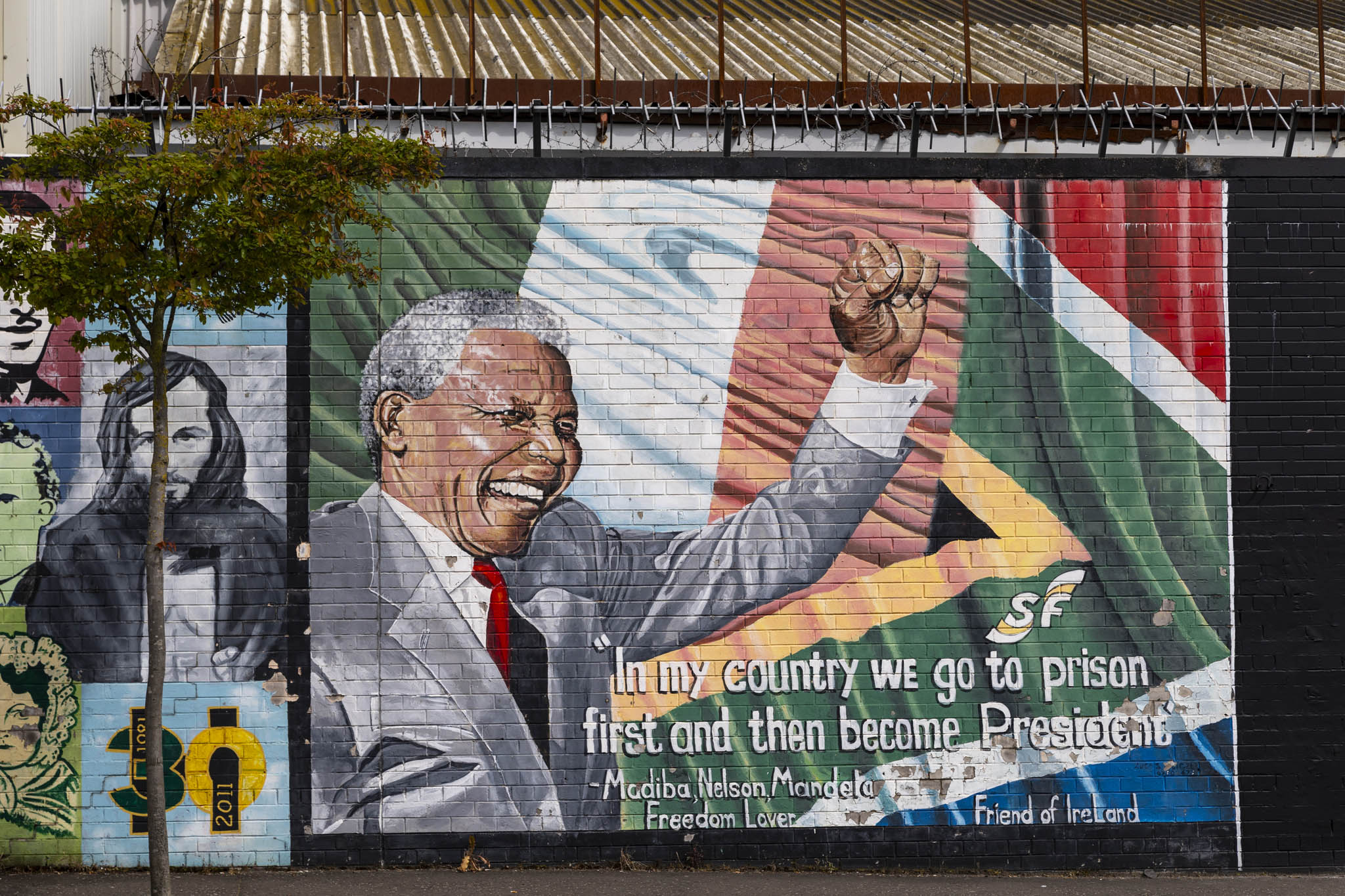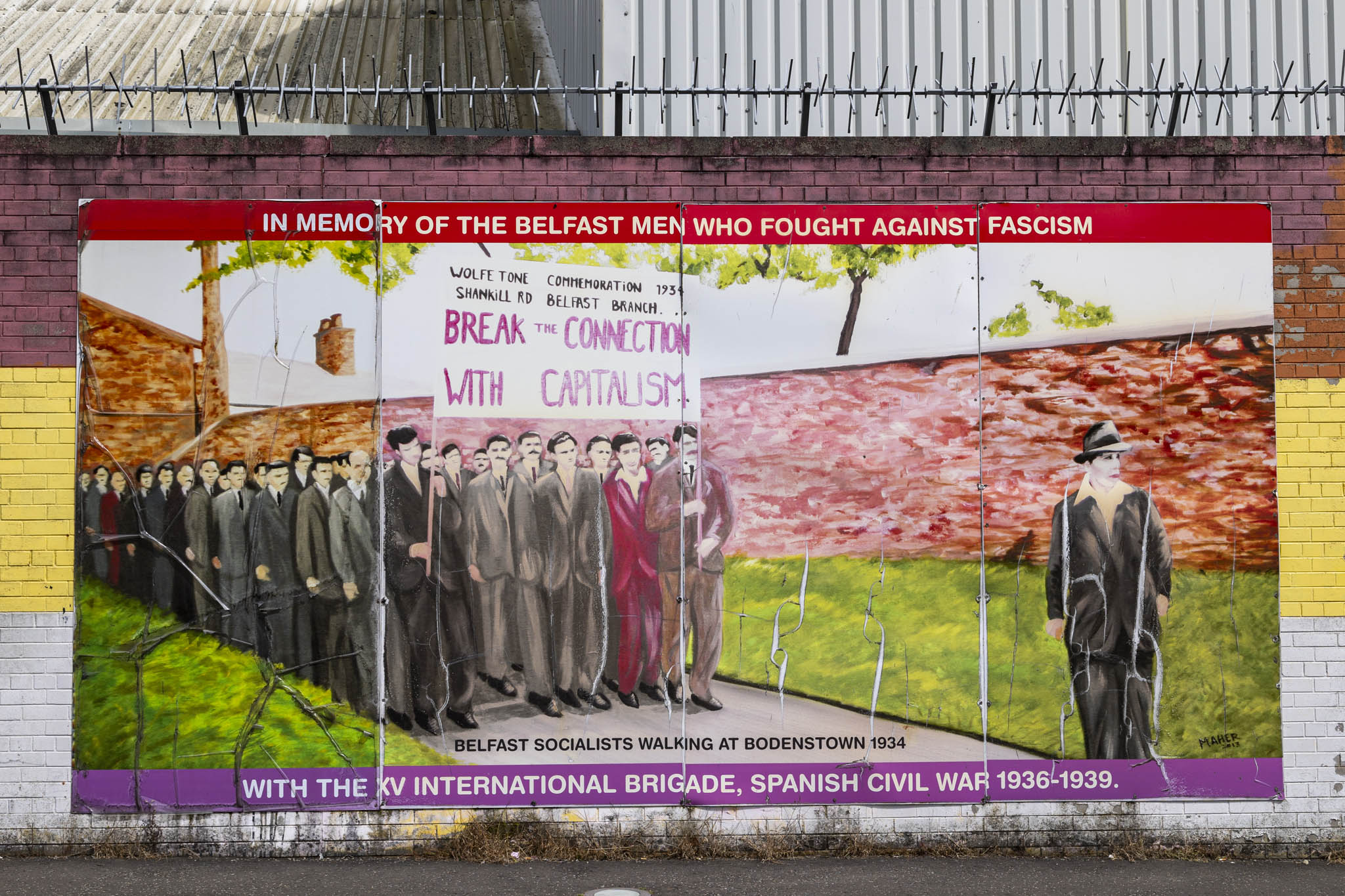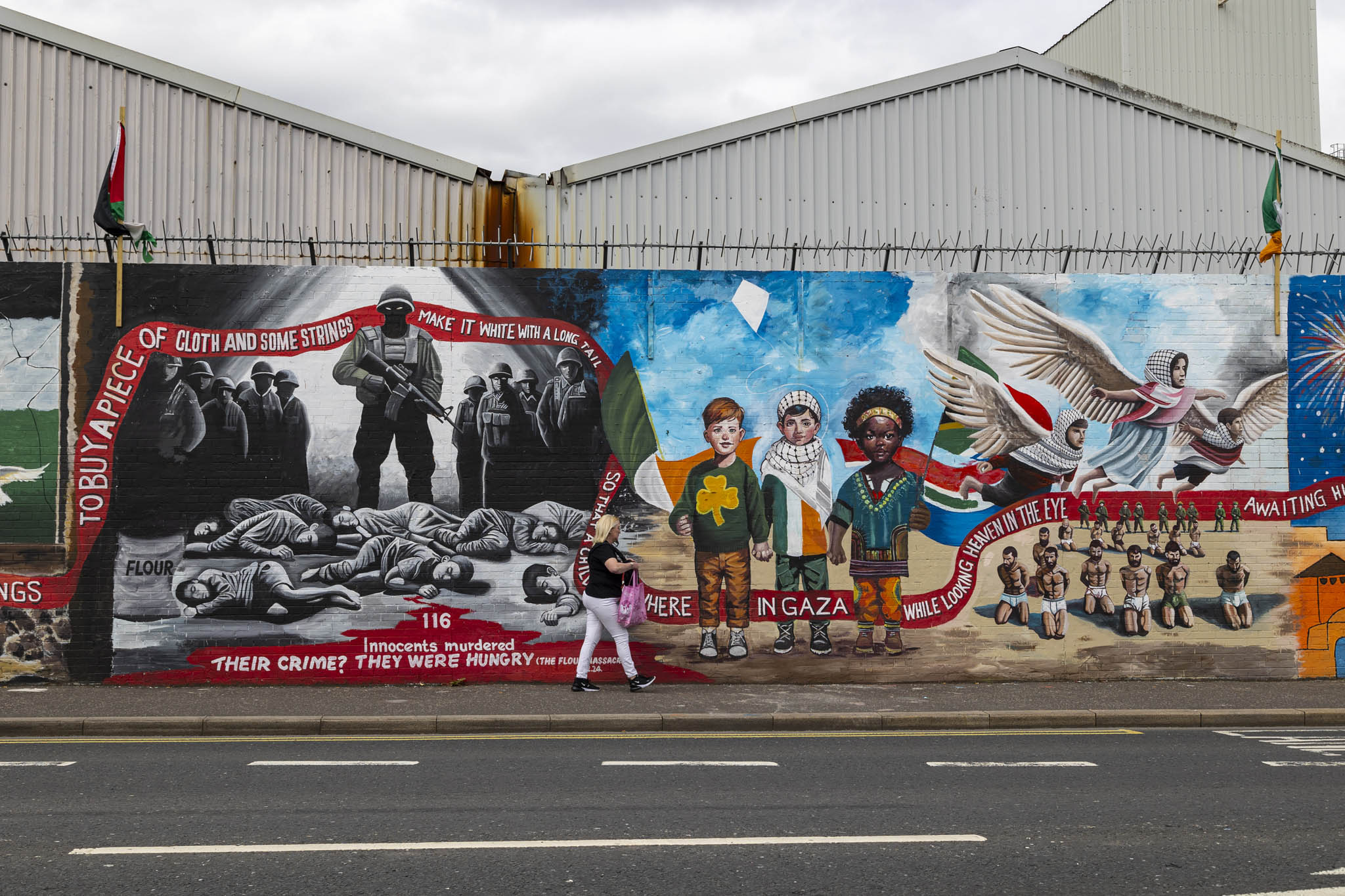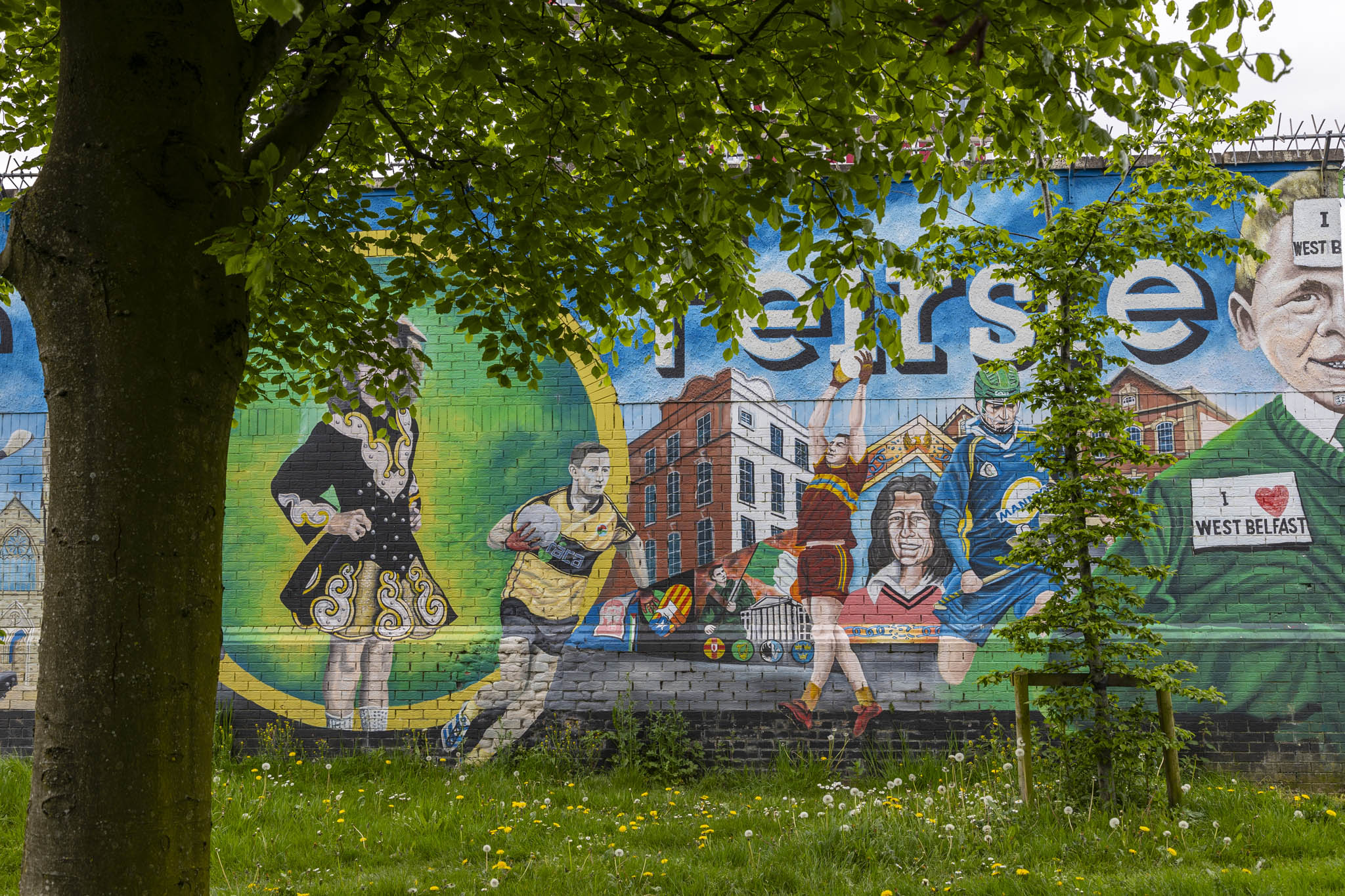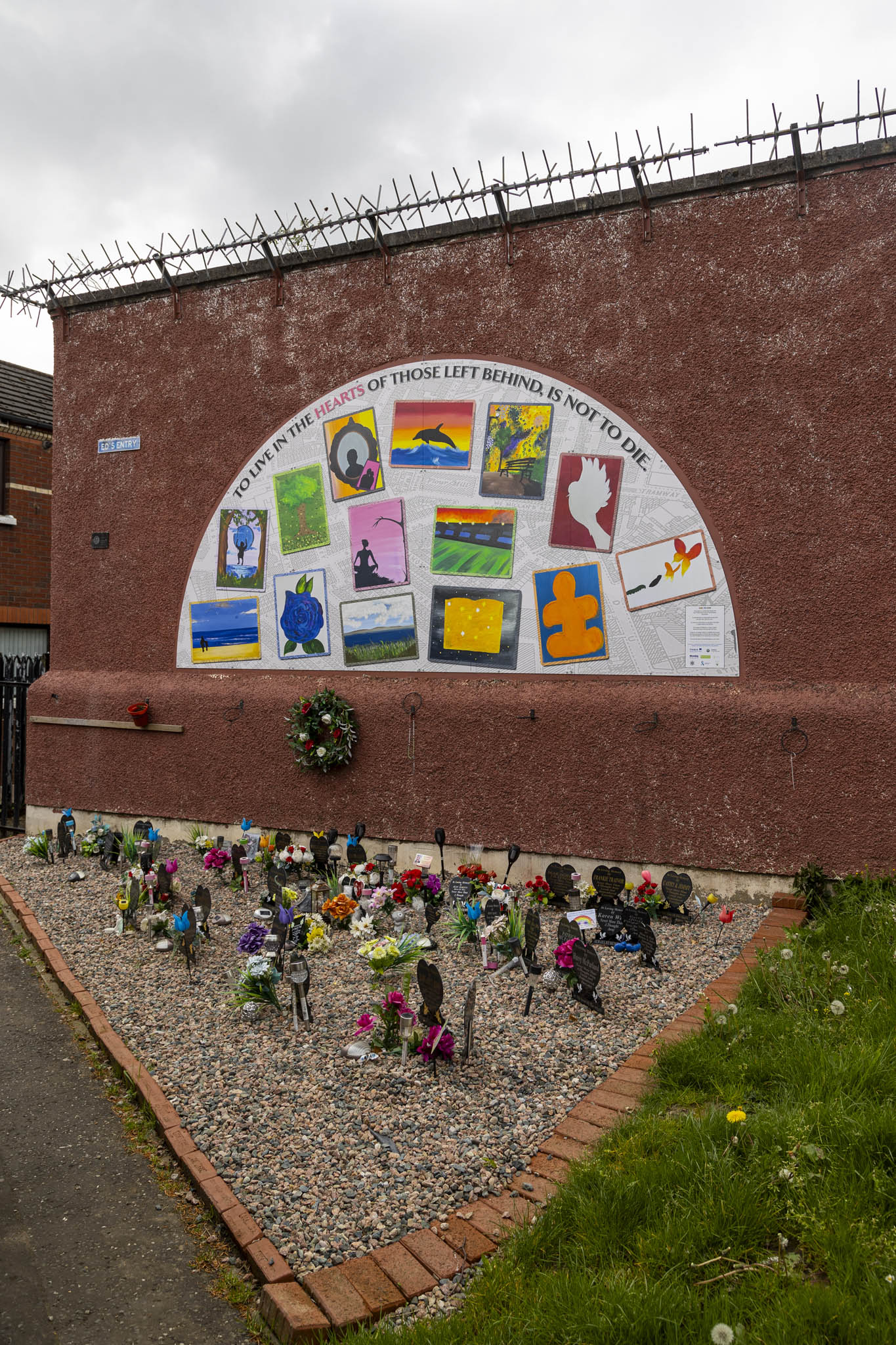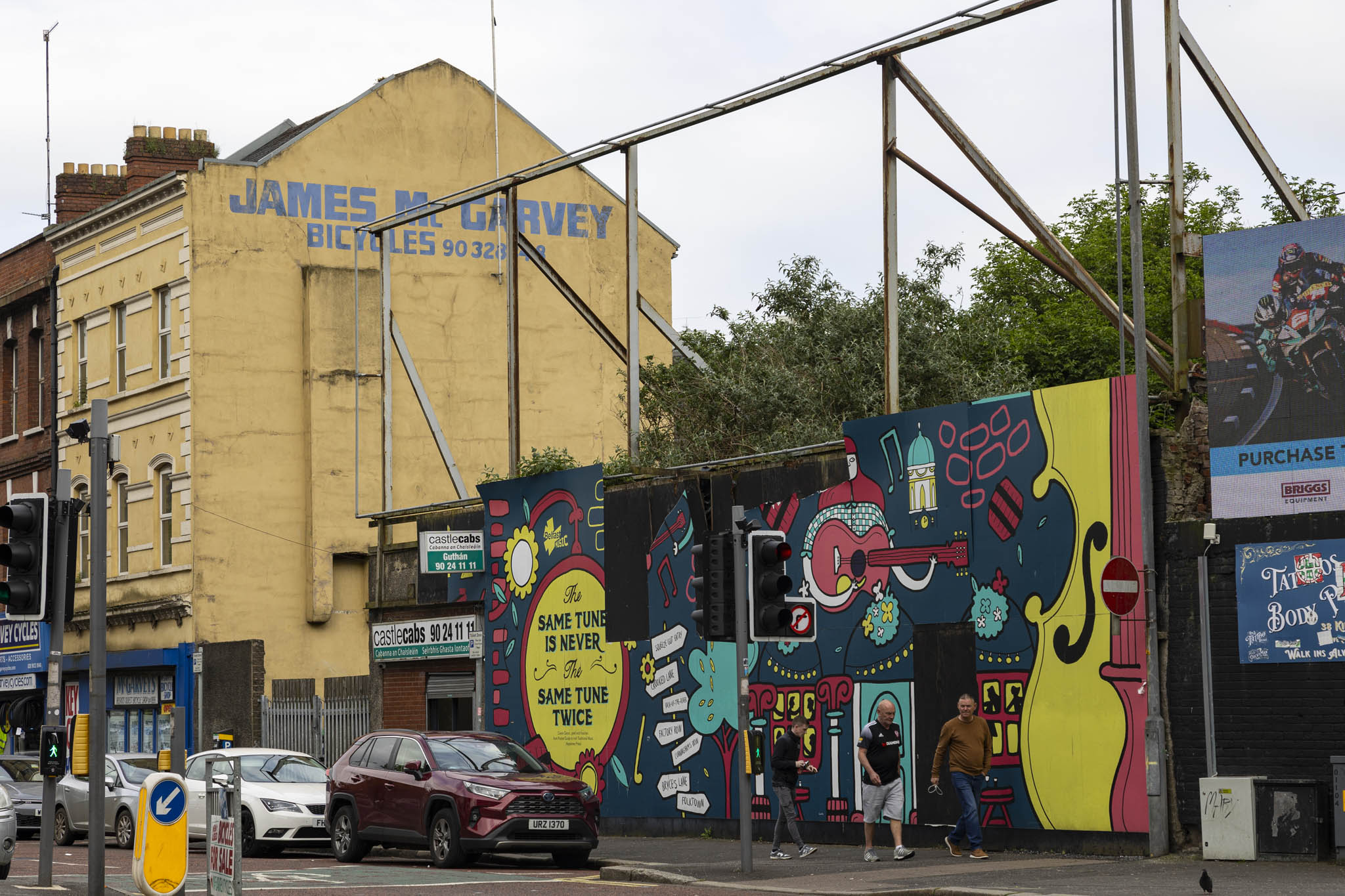A quick look at travel posts that I’ve tagged with Street Art on this site will show that we see a lot of it when we head off on trips around the world, but you might not know that we actually seek out a lot of it too and don’t just happen upon it by chance. That was the case after we’d thoroughly enjoyed our time visiting the Crumlin Road Gaol as we then set off on foot to walk down nearby Agnes Street, then past the Shankill Road (the the in front is often used) and down Northumberland Street towards the Falls Road (ditto) through what was called an Interface Area.
An interface area was a place where neighbourhoods in Belfast with strict ethnic or religious affiliations came together in a spirit of friendship and understanding. Wait. Wait a second. No, that’s not quite true. It’s where anger and violence was commonplace. The areas were therefore often patrolled or segregated by barriers. Following more sensible heads prevailing these parts of Northern Ireland’s capital city have taken on more historical, educational roles, and some have become popular tourist destinations. The west Belfast interface area between the Shankill and Falls roads (loyalist, protestant and republican, catholic areas respectively) is one such area, now known for its street art either side of the barricades, still interestingly sectarian in nature as we were to discover.
The first piece of street art we came across, however, was above a corner of the Shankill Road known as Conor’s Corner, dedicated to a late nineteenth century local artist and featuring some of his work on the walls. The street art that caught our eyes, though, was more modern; a Blade Runner-style artwork called Hope and painted by Dan Kitchener.
At this point we were in the largely loyalist, protestant part of Belfast and the street art was very indicative of themes you associate with British self-identified patriots nowadays: military figures of the dim and distant past, glorifying war achievements, any ethno-cultural prejudices a bonus. John Henry Patterson got his own bit of glorifying on the walls just north of the interface area and he does have a fascinating history: born in Ireland, serving in Africa, killing lions, becoming part of the Ulster Volunteers against the idea of Ireland ruling itself (because it’s nice to be subjugated), then leading what was called the Jewish Legion during World War I which would be the precursor to what is now the Israeli Defence Force. It’s highly likely that defending antisemitism from his own superiors towards the men he commanded ended up pushing him over the edge into full-blown Zionism (because it’s nice to subjugate). A very influential individual.
Through one set of barriers we passed by a few odd sculptures and the Imagine mural which hoped to serve as some sort of bridge between the two cultures either side of the interface area. From this point on the artwork would take on a very different feel with the emphasis on peace, freedom, stopping wars, stopping oppression, releasing political prisoners, and just generally trying to get along with everyone.
We took our time walking slowly along this road, taking in all the themes of the pieces of street art, and we quite often saw taxis turn up and stop with tourists, the drivers acting as guides and giving details on the history of areas or of the meanings behind particular pieces of art. This is quite a popular way to see Belfast by all accounts and if you’re less happy with wandering about on your own or have more pressing need to make the best use of your time then it offers an alternative way of seeing sights such as this.
We eventually turned off the road we’d been walking along and started heading back towards the centre of Belfast where we had one final destination on our agenda for this day in port. At this point the political street art came more-or-less to an end and more general artworks started to pop up on walls and the sides of buildings.
In the next post in this Regal Princess British Isles cruise series we’ll try out some local craft ales then enjoy some of the architecture and sculptures around Belfast City Hall before heading back to the ship.


